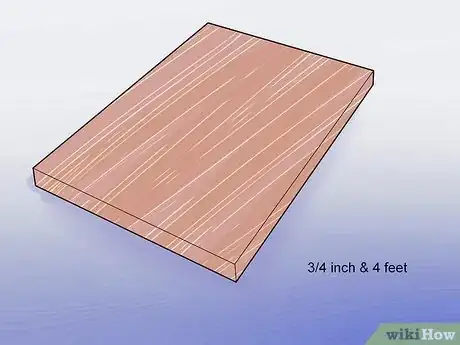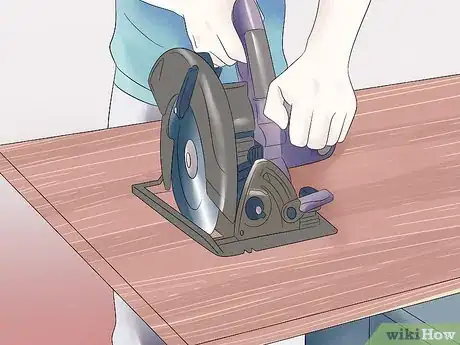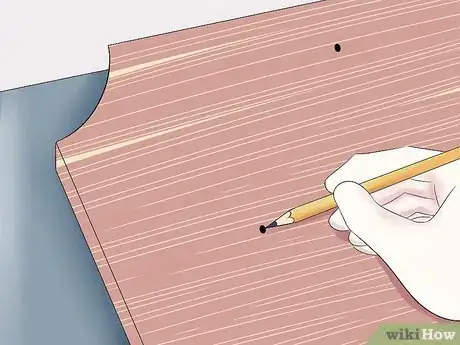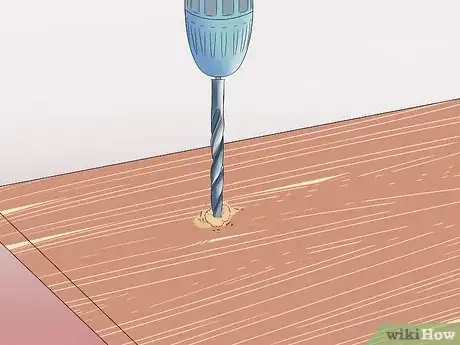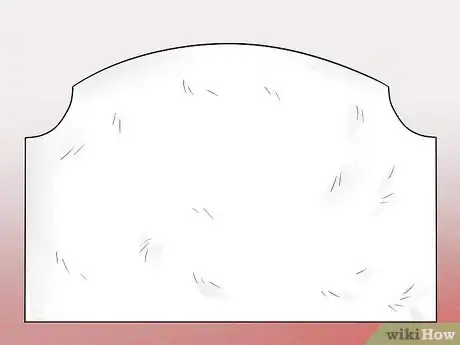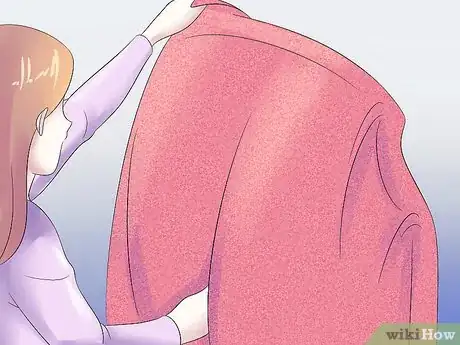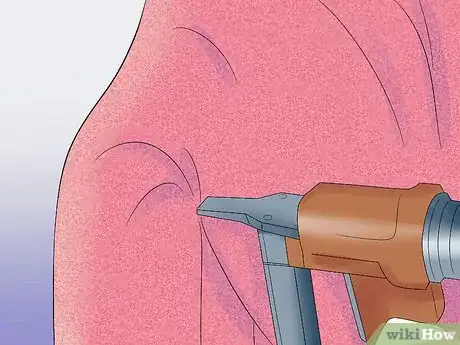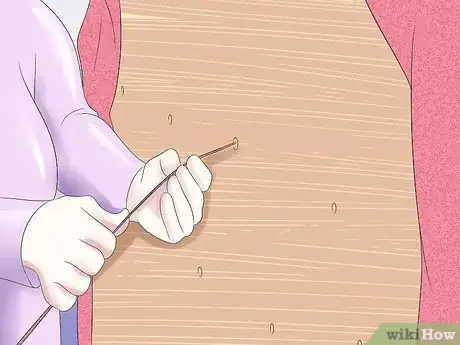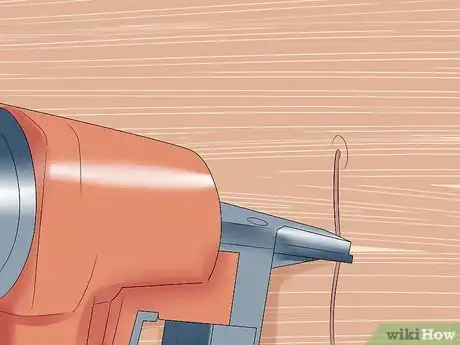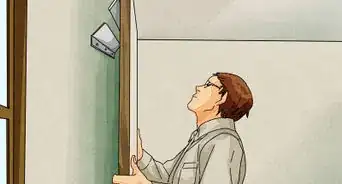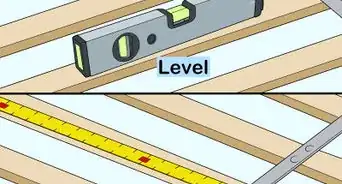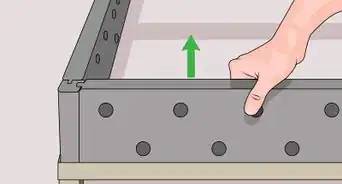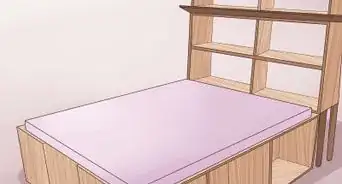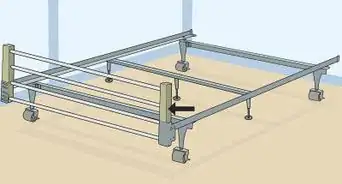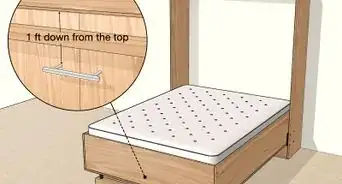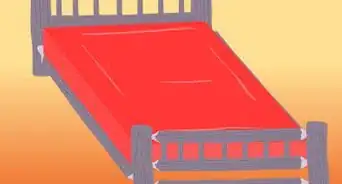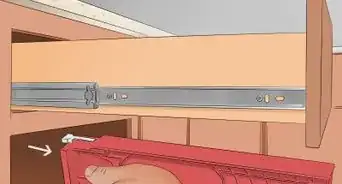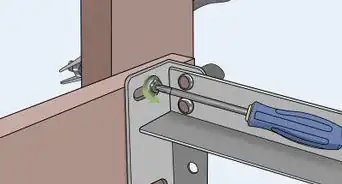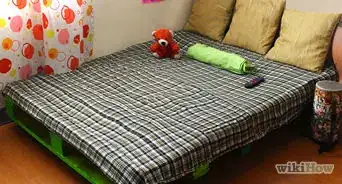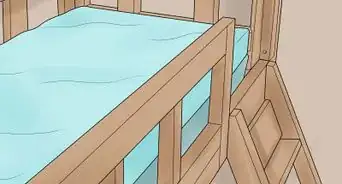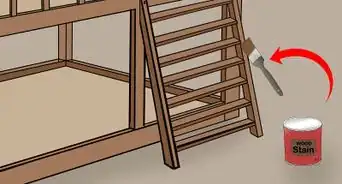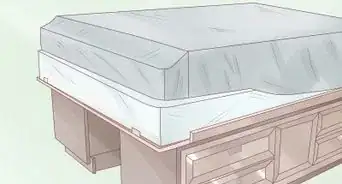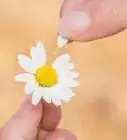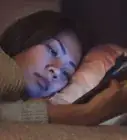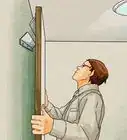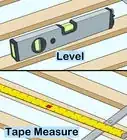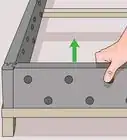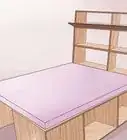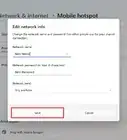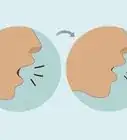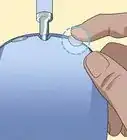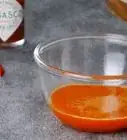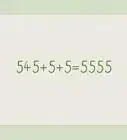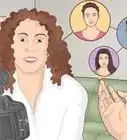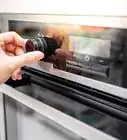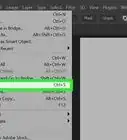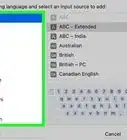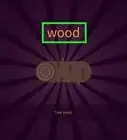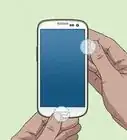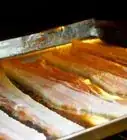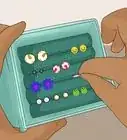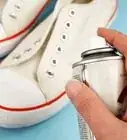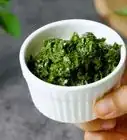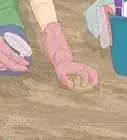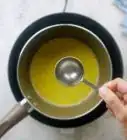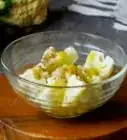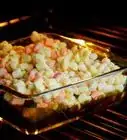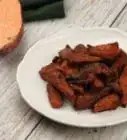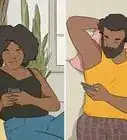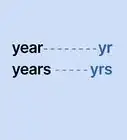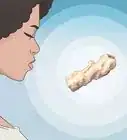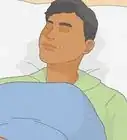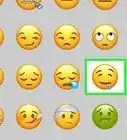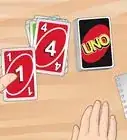This article was co-authored by David Julien. David Julien is a DIY Specialist and the Principal Owner at Nice DIY based in Quebec, Canada. David specializes in creating plans to make unique, affordable, and modern home furnishings. He holds a BA in Graphic Design from the University of Quebec Outaouais. Nice DIY uses sustainable and high-quality materials to create products that are simple to make for everyone.
There are 9 references cited in this article, which can be found at the bottom of the page.
wikiHow marks an article as reader-approved once it receives enough positive feedback. In this case, 100% of readers who voted found the article helpful, earning it our reader-approved status.
This article has been viewed 116,720 times.
Creating an upholstered headboard is a do-it-yourself project that adds style and a touch of your own personality to your bedroom with your choice of fabrics—as well as making your bed potentially more comfortable to sit up in. If you tuft a headboard with buttons, the upholstered result evokes a feeling of elegance and provides a cushioned surface to lean against while reading or watching television. The project should take about half a day, and materials should cost about $50 to $100.
Steps
Make a Wood Headboard
-
1Purchase plywood that is ¾ inch (1.9 cm) thick and 4 feet (1.2 m) wide. You can make a headboard out of almost anything, and in any size.[1] However since it will soon be covered with fabric simple plywood should be fine—no need for expensive hardwoods when no one will see them. Read more about building your own headboard.
-
2Cut the length of the plywood to fit the width of the bed.[2] Beds vary in width from full to king, so measure your bed so you can size your headboard appropriately. Use a circular saw for best results.Advertisement
-
3Mark a pattern for the buttons on the board. You can use two or three, or a dozen, depending on the pattern you want. For the best look place them evenly and symmetrically on the head board.[3]
-
4Drill holes where you plan to place the buttons.[4] The holes shouldn't be very thick—just large enough to easily thread a needle through several times.[5]
- For each button, you can drill 1 hole or 2 holes close together, depending on which method of tufting you wish to use. For two holes, try to match the holes in the buttons you plan to use.
Upholster the Headboard
-
1Purchase fabric, batting and large buttons at a fabric or craft store. Make sure you have enough fabric to more than cover one side of the headboard.[6]
- Choose a fabric that will stand up to wear, especially if the headboard will see a lot of use as a backrest.
- Batting is sold in bags, and you will need 4 bags for 3 or 4 layers.
-
2Cover the headboard with the desired number of layers of batting. The batting should extend about 1 foot (30 cm) over the edge on each side.
- It will take at least 3 layers of batting to create a soft headboard. Adding more layers than that creates extra softness and a more pronounced look.
-
3Trim the edges of the batting on the back of the headboard to 4 inches (10 cm). Staple the batting to the back of the plywood with a staple gun.[7]
-
4Drape your chosen fabric over the headboard. Tuck the edges under, and flip the headboard so the back faces up.
-
5Pull the fabric tight and staple the fabric to the plywood. The fabric should cover the batting on the back completely. Once it is secured, trim away any excess fabric with scissors.
-
6Thread a needle with fishing line or heavy thread and push it through the first hole and out through the batting and fabric from the back to the front. Then run the needle through a large button.
-
7Attach the button. You can do this with either one or two drilled holes, depending on what you decided. Whichever you choose, make sure you pull the button tight to create the tufted look in the batting.[8] Here are the two methods.
- To tuft a headboard with two holes drilled for each button, simply loop the needle back through another hole in the button. Then push it back through the second hole in the plywood and pull it tight. Loop the needle back through the two holes a couple of times more, and then tie off the thread securely.
- With only one drilled hole, use a finishing nail to hold the thread in place. Loop the thread through the button and back through the original hole in the plywood. To keep the thread from simply pulling through the single hole, lay the finishing nail across the back of the hole and loop the thread over the nail and back through the hole. Repeat a few times and then tie off the thread to the finishing nail. Twist the nail to tighten the button down into the fabric to the desired depth. Use a staple gun and staple diagonally across the nail to secure it and keep it from unwinding
-
8Repeat the button process with each of the holes until your headboard is tufted in the desired pattern.[9]
-
9Secure the headboard to the wall behind your bed. Use a headboard hanger, which you can get at most home improvement stores. These have two pieces of metal, one that you attach to the headboard and one that you attach to the wall. They slot together, securing the board to the wall.[10]
Community Q&A
-
QuestionMy headboard is 3 triangles of burlap coated with a semi-hard finish, and it has a metal frame around each triangle. I want to bat and cover each triangle. How do I wrap them?
 T. ChinsenTop AnswererMake a securely-wrapped batting framework for the shape. E6000 is an industrial-strength glue that will securely adhere to any clean surface. Clean the metal well and remove any corrosion. Wipe with alcohol to remove grease. Apply the glue to the metal in sections as you place the batting framework on. Tape it in place, as it will take a couple of minutes to hold if too thick of a dollop of glue is applied.
T. ChinsenTop AnswererMake a securely-wrapped batting framework for the shape. E6000 is an industrial-strength glue that will securely adhere to any clean surface. Clean the metal well and remove any corrosion. Wipe with alcohol to remove grease. Apply the glue to the metal in sections as you place the batting framework on. Tape it in place, as it will take a couple of minutes to hold if too thick of a dollop of glue is applied. -
QuestionWhat is a finishing nail, please?
 DonaganTop AnswererA finish nail has almost no head: its head is barely wider than the shaft.
DonaganTop AnswererA finish nail has almost no head: its head is barely wider than the shaft. -
QuestionWhat spacing should you use for a diamond pattern for buttons?
 DonaganTop AnswererIt depends on the dimensions of the headboard. Use the spacing that looks good to you.
DonaganTop AnswererIt depends on the dimensions of the headboard. Use the spacing that looks good to you.
Warnings
- You can use chipboard, particle board or OSB instead of plywood, but the rough edges tend to snag the fabric as you’re working with it.⧼thumbs_response⧽
- Use safety goggles to protect your eyes while using a saw or drill.[11]⧼thumbs_response⧽
Things You’ll Need
- Plywood
- Circular or hand saw
- Drill
- Batting
- Scissors
- Staple gun
- Fabric for headboard
- Needle and thick thread
- Buttons
- Finishing nails (optional)
References
- ↑ David Julien. DIY Specialist. Expert Interview. 27 January 2021.
- ↑ David Julien. DIY Specialist. Expert Interview. 27 January 2021.
- ↑ https://youtu.be/DlbgRdvO8TI?t=40
- ↑ David Julien. DIY Specialist. Expert Interview. 27 January 2021.
- ↑ https://youtu.be/DlbgRdvO8TI?t=102
- ↑ https://realitydaydream.com/upholstered-headboard-tutorial/
- ↑ https://www.housebeautiful.com/uk/renovate/upcycle/news/a365/how-to-make-a-fabric-covered-headboard/
- ↑ https://www.heytherehome.com/diy-upholstered-headboard/
- ↑ https://www.heytherehome.com/diy-upholstered-headboard/
About This Article
To make an upholstered headboard, start by cutting a piece of plywood to fit the width of your bed. Then, use a pencil to make a pattern for the buttons and drill holes where you plan to place them. Next, staple the board with layers of batting, then drape fabric over the board. After that, tuck the edges under and staple the fabric in place. Finally, attach the buttons for each hole using a threaded needle and finish by securing the headboard to the wall. For more tips, like how to tuft your headboard, read on!
